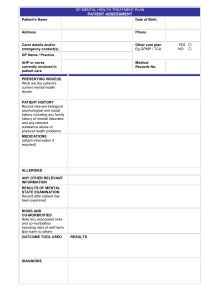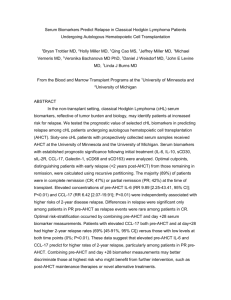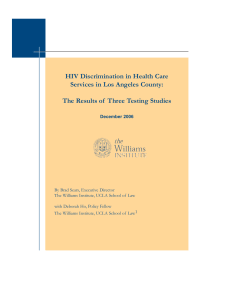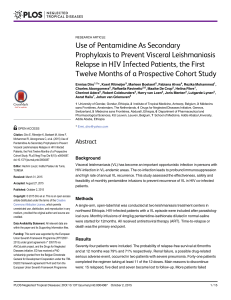HIV-positive new and relapse TB patients on ART during TB treatment
advertisement
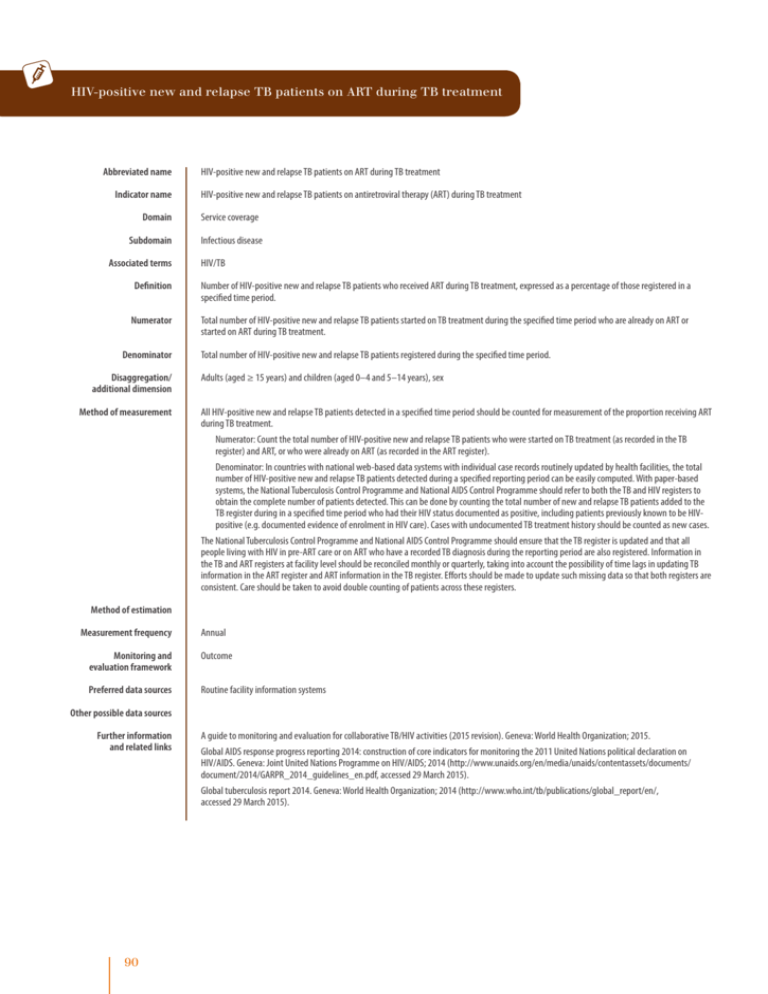
HIV-positive new and relapse TB patients on ART during TB treatment Abbreviated name Indicator name Domain Subdomain Associated terms HIV-positive new and relapse TB patients on ART during TB treatment HIV-positive new and relapse TB patients on antiretroviral therapy (ART) during TB treatment Service coverage Infectious disease HIV/TB Definition Number of HIV-positive new and relapse TB patients who received ART during TB treatment, expressed as a percentage of those registered in a specified time period. Numerator Total number of HIV-positive new and relapse TB patients started on TB treatment during the specified time period who are already on ART or started on ART during TB treatment. Denominator Disaggregation/ additional dimension Method of measurement Total number of HIV-positive new and relapse TB patients registered during the specified time period. Adults (aged ≥ 15 years) and children (aged 0–4 and 5–14 years), sex All HIV-positive new and relapse TB patients detected in a specified time period should be counted for measurement of the proportion receiving ART during TB treatment. Numerator: Count the total number of HIV-positive new and relapse TB patients who were started on TB treatment (as recorded in the TB register) and ART, or who were already on ART (as recorded in the ART register). Denominator: In countries with national web-based data systems with individual case records routinely updated by health facilities, the total number of HIV-positive new and relapse TB patients detected during a specified reporting period can be easily computed. With paper-based systems, the National Tuberculosis Control Programme and National AIDS Control Programme should refer to both the TB and HIV registers to obtain the complete number of patients detected. This can be done by counting the total number of new and relapse TB patients added to the TB register during in a specified time period who had their HIV status documented as positive, including patients previously known to be HIVpositive (e.g. documented evidence of enrolment in HIV care). Cases with undocumented TB treatment history should be counted as new cases. The National Tuberculosis Control Programme and National AIDS Control Programme should ensure that the TB register is updated and that all people living with HIV in pre-ART care or on ART who have a recorded TB diagnosis during the reporting period are also registered. Information in the TB and ART registers at facility level should be reconciled monthly or quarterly, taking into account the possibility of time lags in updating TB information in the ART register and ART information in the TB register. Efforts should be made to update such missing data so that both registers are consistent. Care should be taken to avoid double counting of patients across these registers. Method of estimation Measurement frequency Annual Monitoring and evaluation framework Outcome Preferred data sources Routine facility information systems Other possible data sources Further information and related links A guide to monitoring and evaluation for collaborative TB/HIV activities (2015 revision). Geneva: World Health Organization; 2015. Global AIDS response progress reporting 2014: construction of core indicators for monitoring the 2011 United Nations political declaration on HIV/AIDS. Geneva: Joint United Nations Programme on HIV/AIDS; 2014 (http://www.unaids.org/en/media/unaids/contentassets/documents/ document/2014/GARPR_2014_guidelines_en.pdf, accessed 29 March 2015). Global tuberculosis report 2014. Geneva: World Health Organization; 2014 (http://www.who.int/tb/publications/global_report/en/, accessed 29 March 2015). 90


